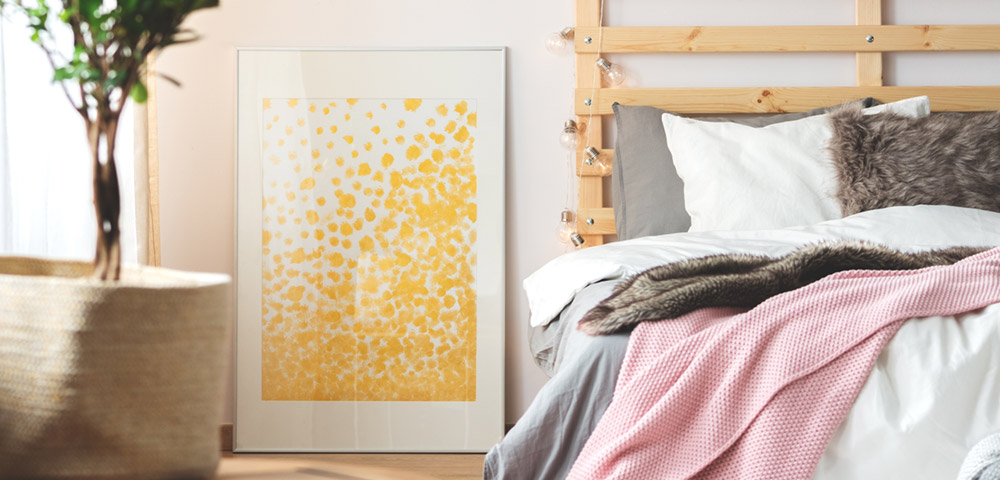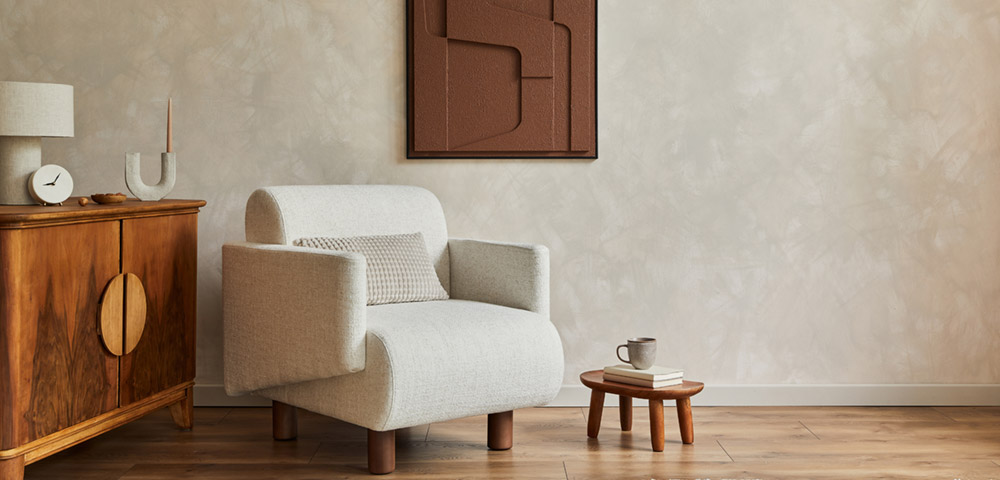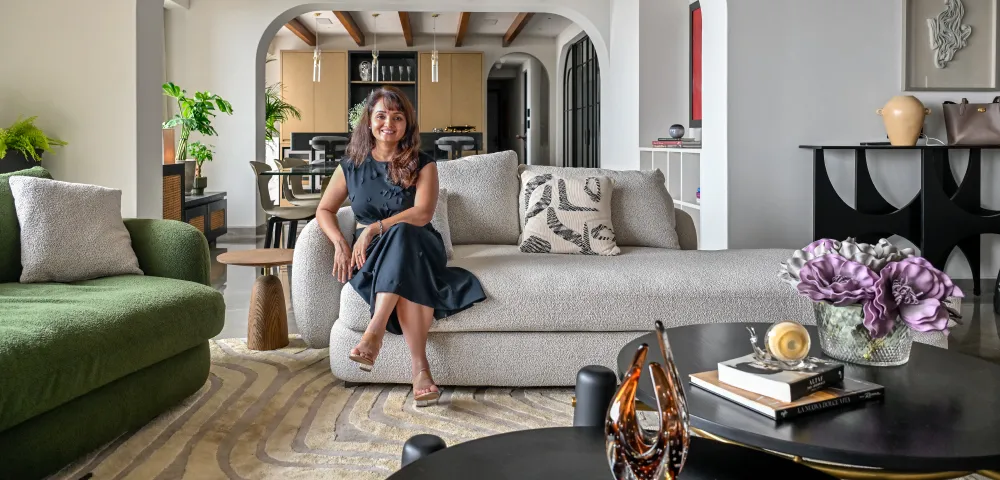7 Tips on How to Curate the Right Art For Your Home
By design pataki
October 06, 2023Drawing inspiration from Oprah Winfrey's words, who once said, "When you invite people to your home, you invite them to yourself," it becomes evident that your home serves as a reflection of your identity--your beliefs, expressions, interests, personality, and inspirations. Art plays a pivotal role in amalgamating all these facets. It has the power to entirely metamorphose a space, yet building an extraordinary collection of home decor paintings demands patience and deliberation. Whether you seek to construct a personal art collection that deeply resonates with your soul or view it as a savvy investment, embarking on a journey into the realm of art often yields gratifying outcomes. Nonetheless, it is unwise to plunge into this venture without adequate knowledge. The allure of art lies in its unpredictability--how, when, and why a particular piece strikes a chord with your heart remains a delightful mystery.
Your task is to carefully handpick the pieces that align with your unique personality and essence. To simplify the process, we have compiled seven invaluable tips on how to curate the perfect art collection for your home, dig in:
Start Off Small

Selecting art is part instinct and part learning. Gone are the days when you had to look out for the limited edition paintings of legendary artists like M.F. Hussain or Manjit Bawa. You can now choose from whatever that resonates with you--take it slow and start curating smaller pieces of your favourite, emerging artists. Pro tip: Look for artwork to brighten the smaller and often neglected nooks and crannies in your home. Starting off small has its very own edge--it gives you the opportunity to experiment with different styles, mediums, and frames. You can start with serigraphs and vintage posters too. These smaller art pieces can be displayed on shelves, mantels, or even grouped together on a gallery wall. The ideal place for these little expressions can usually be those unusual spaces that often slip our minds when it comes to home décor. It is always a good idea to procure sets of retro coffee posters of the world from curio shops and complete them with quirky frames for that empty kitchen wall.
Stay True to Your Aesthetics

The best way to create an art collection is by staying true to your interests, and by identifying themes and topics that you are personally drawn to. Selecting a painting, sculpture, or serigraph that not only captivates your visual senses but also harmonises with your home's interior is essential for crafting a cohesive artistic theme. Whether you are bent on landscape, portrait or abstract, impressionism or expressionism, your personal preference is instrumental in the overall aesthetics of the space. Each has its own unique design aesthetics that add character and value to the space. If owning the original artworks of eminent artists becomes challenging, numerous serigraphs of artists such as M.F. Husain, S.H. Raza, Haku Shah, and Jamini Roy always beautify the space with their vibrant colours and storytelling.
Explore and Research Goes a Long Way

To invest in your home décor art it's really important to do research, further to get into the design language of each artist. Research and exploration help you develop your artistic taste, letting you curate a collection that tells a story and reflects your individuality. People often don't know how to describe what art they like, but they know it when they see it. If you fall in the mentioned category, then we insist you visit art galleries, museums, online platforms, and local art events that'll expose you to different art forms. If you like Henri Matisse, it shows your love for bold strokes and colours. Furthermore, speaking to gallerists and art curators will bring you in touch with emerging artists who follow that style.
Consider the Room's Colour Scheme

Pro tip: choose a colour scheme in your paintings that can act as a springboard for the room's colour palette. Or take logic for a walk, turn it around and look for a painting that complements the colours already in the room. The colour yellow paints a welcoming, cheerful mood; a piece of artwork that has a bright golden yellow or lemon yellow hue is perfect for the living room. Paintings that boast shades of red or orange are ideal for living and dining rooms, as they enliven the space with high energy. Pastels are naturally calming, so set the bedroom's colour scheme with an array of light hues. A classic B/W colour palette is timeless; consider setting a gallery wall with Amit Kumar Meena's hyperrealistic charcoal paintings on the all-white backdrop wall.
Layer the Look

In popular opinion, it is considered stodgy to have a room full of drawings standing or a single painting in an empty space. When curating home décor art the dealbreaker question is whether you would like to see a painting on your walls every day or a sculpture on a pedestal stand. Creating a layered look with art pieces is a great way to dress down a room. Mix things up to make it eye-catching and show more of your personality. Mix pottery, sculpture, paintings, prints, and more. A handcrafted porcelain figurine on the console can match up a 19th-century portrait at the back wall or an antique cast bronze Ganesha statue at the backdrop of a scintillating Tanjore painting--there is everything and anything for your choices.
Pick the Spot for the Painting

Art is the most powerful tool in any room and sets the tone for everything else. Naturally, selecting artwork for your home can be daunting and exciting at the same time. While drawing ideas for home décor, selecting the ideal spot or the perfect space is vital. Next is to decide why you want to use the space and what purpose that art will serve. Before you go on the constant lookout for 'the art piece', closing on the design scheme in question is vital for your space. Needless to say, the meaning of that art needs to be discovered and resonated with. However, even in the end, choosing the right wall or space for your curated painting can cast an unparalleled, immersive and lived-in experience.
Size is Important: Be it of the Wall Or the Painting on it

Speaking of scale, it's very important to take into account the size of the wall when selecting the right piece of decoration art. A very large painting would overwhelm a small wall; try a salon-style hang that looks effortlessly boho chic on a large wall, if done right. The mismatched art cluster of salon-style hang is a concept telling a narrative of its own, waiting to be utilised to its potential maximum. You can also use a gallery approach or a stunning large canvas one, the choice is subjective, and more importantly, yours! Thinking about balance and symmetry when selecting art for a specific space is a supreme parameter for an ideal wall décor setting.
Now that we tipped you off about the right ways to curate art for your home it's time to roll up your sleeves and hang that art in your home.
A series with Design Pataki.
You may also like



 Enquire
Enquire
 Call
Call
 chat
chat
 Search
Search





